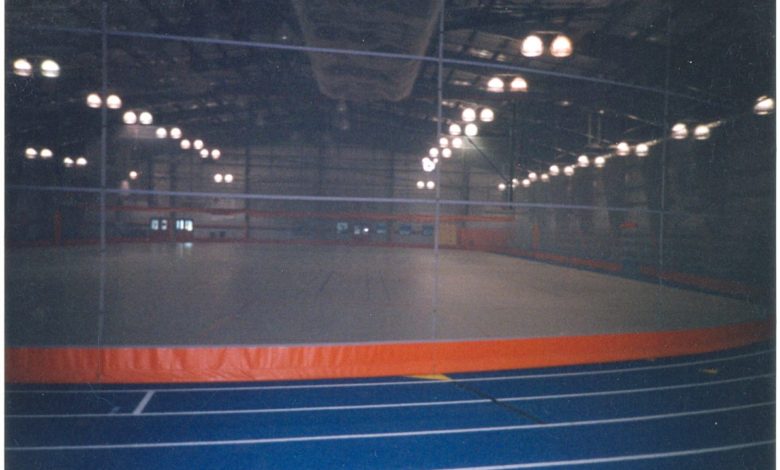Mahomet-Seymour Board votes to renovate fieldhouse

BY DANI TIETZ
dani@mahometnews.com
As the Mahomet-Seymour School Board prepared to open new business, IL Senator Chapin Rose came to the meeting to let them know that $400,000 of tax money from the State of Illinois will be given to the school district to renovate the Mahomet-Seymour Fieldhouse if the district and the Village can come to terms in making the space something that is accessible for school and community use.
Rose had just come from the fieldhouse where his children were using it as part of the Mahomet Parks and Recreation’s basketball program while his son played in the main gymnasium.
“There’s been some tension on use of the fieldhouse,” Rose said.
Rose said that the district administration approached him to see if there might be help on the state side as they look to replace the fieldhouse floor and curtains.
In an attempt to keep property taxes low in Mahomet, Rose said that the state tax dollars could be used to help offset the costs associated with upgrading the facility.
Village Administrator Patrick Brown, Mayor Sean Widener, Superintendent Lindsey Hall and Rose worked out a plan where the fieldhouse would become more available to the community. Widener said that the Village would also help supply workers during certain hours to make sure the facility could be used by the public.
The 102,500-square-foot fieldhouse was built in 2000 after the district asked taxpayers for $8,701,400 additional money to construct the gym with an attached weight-room and locker rooms facilitates. With the additional tax money for its construction, residents were promised the facility would be open for public use.
“We hope this is a win-win for everyone,” Rose said. “We suggest that there be an actual written agreement between the school and the city to prevent any hard feelings, confusion or miscommunication.
“As a parent in this district, you look at Easter and Christmas break, it’s when kids should be out of the house,” Rose said. “They’re cooped up too much. But the fieldhouse is closed to the community.
“One of the things I’d like to see is open it up more for the community to use it.”
The district has been eyeing a fieldhouse upgrade for more than a year. In 2018, they were poised to renovate everything from the fieldhouse floor to the locker rooms to the CAIR Center. The project fell through because of legislation early in 2019.
BLDD Architect Damien Schlitt and school district Chief Financial Officer Trent Nuxoll presented bid packages to the Mahomet-Seymour Board Tuesday night. Schlitt said that because of rising construction costs associated with demand in Champaign, bids came back higher than they did in 2019.
Because of that, the bids did not include enhancements to the PE and team locker rooms or the fieldhouse batting cages.
The bid acceptance recommendation did include the fieldhouse painting, lighting upgrade, tectum panels, HVAC replacement, field house locker room renovation, upgraded athletic equipment and controls, and goal height adjusters for the basketball hoops at $1,571,441.
The original total was $1,796,144, including the main gymnasium locker rooms and batting cages.
The Mahomet-Seymour Education Foundation put in $56,000 for the goal height adjusters and the district expects to get a $50,000 School Maintenance Project Grant.
The District will put in $350,000, then bond $965,000 against the 1-percent sales tax. The District’s Health Life Safety funds will contribute $143,153 and Tort will be used at $10,000.
Board member Colleen Schultz asked how the district could accept bids for work without first having the funding to pay the contractors.
The debt certificate for the project will be up for approval in March.
“So how do we accept a bid and sign a contract when we don’t have the money?” Schultz asked.
Schlitt said that if the debt certificate would have been approved first, it’s possible that the district would have underestimated the amount needed, and been “upside down” when the bids came in.
“No costs for these projects will be billed out until June or even July,” according to Schlitt.
Board President Max McComb said the district still doesn’t know the timing of the $400,000 from the state.
McComb suggested that if the community uses the batting cages, maybe the state money could be used for that. Another suggestion was to put money into renovating the locker rooms in the main gymnasium, as planned previously.
Board member Meghan Hennesy said the board received an email that stated the district needed to prepare for growth over the next three-to-five years and potentially changes to the high school in that time, so she wasn’t sure putting the money towards locker room renovations would serve the district well.
Hennesy said with the addition of the $400,000, it might be worthwhile to revisit the discussion of securing Mahomet-Seymour Junior High School entrance with the funds that will be freed up because of the state tax money being used for the fieldhouse.
She suggested the $400,000 be applied to the fieldhouse floor renovation because the community uses that, then to take the money budgeted previously to provide safety measures for students.
“If we have the opportunity to look at the safety at that building because we can reallocate funds that we were going to use here, that seems like a real good use of that money,” Hennesy said.
Hall said there were a number of concerns about remodeling the front entrance of the junior high, particularly with the traffic flow and personnel.
McComb agreed that the secure entrance should be looked into since there are additional funds now.
Board member Ken Keefe said that just because those funds are there, it does not mean they have to spend them right away.
“I think we should take some time and really assess what our needs are,” he said.
Hennesy said that she feels like the decisions to spend money are done in a bubble.
“I know for a fact that (Middletown Prairie) needs to be added on within the next three to five years. I’ve seen no plans and no discussion of cost for that; we’ve talked about Lincoln Trail being at capacity, I’ve seen no discussion or cost for that; we’ve talked about the junior high being in such dire straits that we have to scrap it completely, but I see no plans or costs for that.”
She didn’t understand how the district having to come up with $2 million for a road they are obligated to build for the Village was an insurmountable cost, but 25 minutes later the board is in support of spending $1.5 million on a renovation when there are other needs in the district.
Hall said that it is true that there are space needs throughout the district.
“But this money here comes nowhere close to addressing our space needs,” she said.
Hall said that the board’s attempt to launch community engagement to discuss a facilities plan has been kicked down the road for a year.
“It is true, there is no plan,” she said.
McComb said he has been begging for this, and Hennesy reminded him that he sets the agendas.
“Why is that not No. 1 on the agenda?” Hennesy asked.
Hall said the board has tried to have special meetings about community engagement to discuss a process for it.
Previous board consensus isn’t the best time to bring the community into a discussion when current board members are not able to discuss things.
Keefe tried to come up with a way to whittle down the list and pick out functional, but not cosmetic, renovations in order to eliminate the need for a debt certificate.
Board member Lori Larson said that she felt like the entire package needed to be done so that when people come to the fieldhouse they see a complete package, rather components that are in dire straights.
Keefe said that he was in the fieldhouse bathrooms recently and didn’t think they were in dire need.
While McComb appreciated Keefe’s creativity, he and board member Merle Giles said that the district should go with the full bid package. They felt that the topic had been mulled over long enough and that construction costs continue to increase.
“We’ve needed something done here for five years,” Giles said. “It’s time to do it.”
The full package passed with a vote of 6-1. Keefe voted no.





